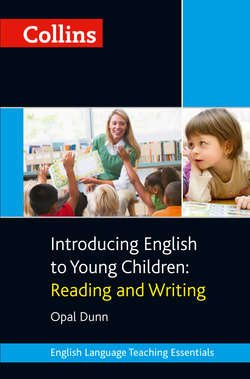Читать книгу Collins Introducing English to Young Children: Reading and Writing - Opal Dunn - Страница 10
3 Listening to the maturing child
Оглавление3.1 Self-educators
3.2 Motivation
3.3 Evaluating success
3.4 Autonomy
3.1 Self-educators
Helping children learn better is not the same as helping them become better learners.
(Claxton)
Young children are self-educators if they are provided with enabling experiences. From about 5 years old, many children show signs or wanting to do things for themselves. Many of them already want to become independent, saying things like Let me try. I can do it. They are active agents in their own learning and develop personal strategies to help them progress (including language-learning strategies, which – with adult help – they can reuse to acquire English).
By the age of 6, without being formally taught, children have managed to develop a range of self-learning strategies with which to learn many things. ‘Learning to learn’ involves knowing and being able to use these self-learning strategies effectively. Effective learning at this age forms the foundations for life-long learning.
Strategies are sequences of behaviour, which are developed to enable us to do things in more effective and efficient ways.
(Stewart)
By the age of 7, many of the self-learning strategies for acquiring language are in place, since children are by now fluent L1 speakers. Children who already read and write in L1 have also acquired some self-learning strategies for coded L1 literacy.
As teachers, we need to foster young children’s ability to self-learn, helping them to work out how to transfer their self-language-learning strategies to absorb English successfully. By now, children will already have unconsciously transferred their strategies to pick up spoken English, but they need help to do the same when learning how to read and spell and later create written English.
Learning to reuse and broaden strategies to acquire English cannot be taught by imposed instruction. Children have to explore and experiment for themselves, but they also need to be helped through focused tutor-talk explanations and modelling that they can imitate. Children need time to find out how to use their strategies to solve problems, self-manage and persevere to achieve progress.
